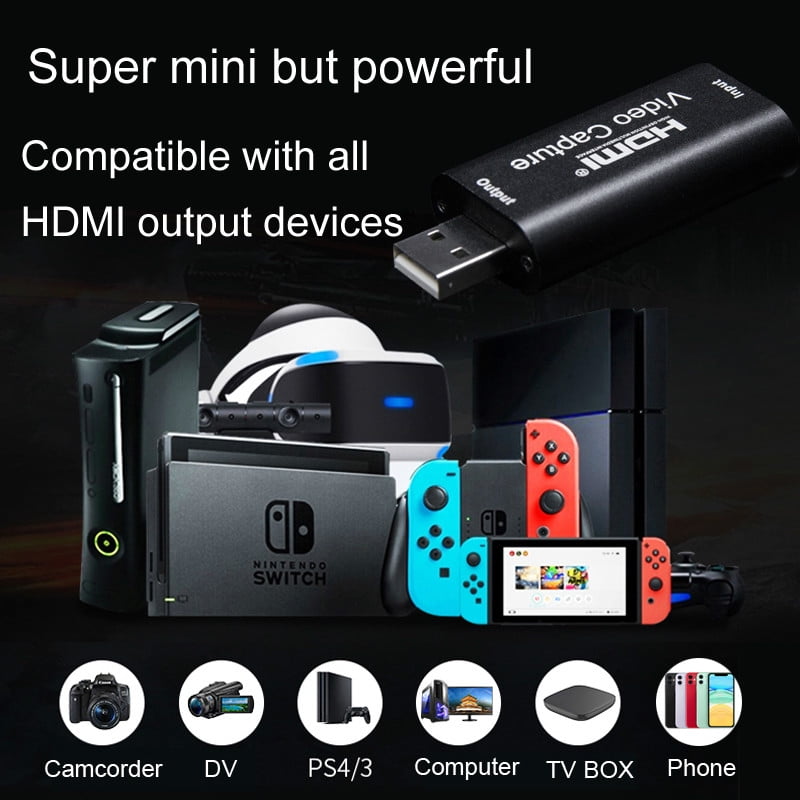

- #Best video capture card for pc 1080p#
- #Best video capture card for pc pro#
- #Best video capture card for pc software#
- #Best video capture card for pc Pc#
PCI-E is theoretically, the interface used to connect high-speed components. PCI-E vs USB Video Capture Cards: Which is superior for gaming?Īs you've noticed, these capture cards are all PCI-E, which stands for peripheral component interconnect express.
#Best video capture card for pc 1080p#
It’s best for capturing in 1080p - which is good enough for most streaming platforms.įind more YOTOCAP YT-204 1080p60 information and reviews here. Running at around $100 less than the Elgato and the AVerMedia products mentioned above, the YT-294 is one of the best budget PCI-E capture cards out there. It’ll reduce the amount of time you have to play with wires, and increase the amount of time you could be streaming.įind more AVerMedia Live Gamer Dual Dual HDMI 1080p information and reviews here.īlackmagic Design Internal PCIe Video Capturing DeviceĪnd last, but - well, monetarily it is the least - we have the YOTOCAP YT-294 4K capture card. If you’re not actually interested in filming yourself for your streams, just hook the second HDMI cable up to another console you play with a lot. You can easily do a picture-in-picture stream.
#Best video capture card for pc software#
They show up as two different video feeds for whatever editing software you plan on using. The capture card can only capture 1080p, but one of the HDMI inputs can pass through at up to 4 K. It has two HDMI inputs, which the Liver Gamer Duo dutifully receives and encodes without disturbing your gameplay. The AverMedia Live Gamer Duo allows you to do just that. If you have a cute aesthetic or your reactions are really funny, make that your angle - and capture it flawlessly by adding a DSLR camera into the mix. If you’re streaming for community or coin (or both?) you need an angle to make you memorable.
#Best video capture card for pc Pc#
2 - but you do still need a quality PC setup.
#Best video capture card for pc pro#
There are fewer system requirements to use the Live Gamer 4K than the 4K60 Pro Mk. Note: You need to use RECentral, AVerMedia’s editing software, to change the resolution.Īnother draw of the Live Gamer 4K is its surround sound audio support, which allows you to give your audience better audio quality. If you’re playing something fast-paced, like an esports or first-person shooter game, then lower the resolution to something like 1080p at 240 FPS. The HEVC codec captures HDR metadata and presents high-quality visuals without a huge bitrate - meaning that you (and your viewers) won’t need a ridiculous amount of bandwidth to get the benefit of smooth, silky visual gameplay. The Live Gamer 4K includes an H.264 codec and a high-efficiency video coding (HEVC) codec. The Live Gamer 4K was also one of the first cards able to record HDR - which was one of the main reasons why Elgato released a second version of the 4K60 Pro. The card’s major draw is its imagery capabilities: Stream in 4K resolution at 60 FPS, 1440p at 144 FPS, or 1080p at 240 FPS. 2 is no slacker, and it shows - mainly through the extensive system requirements to use this video capture card.ĪVerMedia is just about as well known as Elgato, and the AVermedia Live Gamer 4K capture card was designed to rival Elgato’s 4K60 Pro. The capture card is also so low latency - virtually lag-free - that gameplay is “instant.” That will definitely put you ahead of the competition, in terms of gameplay and quality of content.

2 has an optimal resolution/refresh rate for you.

Whether you’re a shooter game fanatic or an e-sports athlete, the 4KPro Mk. You can also vary your resolution and refresh rate combinations - from 1080p at 120 Hz to 1440p at 144 Hz to 1080p at 240 Hz and more. 2, you can record in HDR, 2160p at 60 FPS (frames per second), and 1080p at 60 FPS. HDR is a new display standard that offers brighter highlights and darker shadows, which combine to offer content that looks more life-like than the Standard Dynamic Range (SDR) that you traditionally see. It was designed to keep up with the High Dynamic Range (HDR) of imagery used in popular releases, as well as the tons of viable alternatives on the market today. 2 is the updated version - the mark 2 - of the 4K60 Pro.
/15-116-116-Z01-78c58351067b45b5b3bbfbe260652164.jpg)
Back when 4K was in its infancy, Elgato didn’t have much in the way of competition. Elgato is such a well-known gaming hardware provider that even the most novice streamers (think: your little brother) have heard of them.


 0 kommentar(er)
0 kommentar(er)
